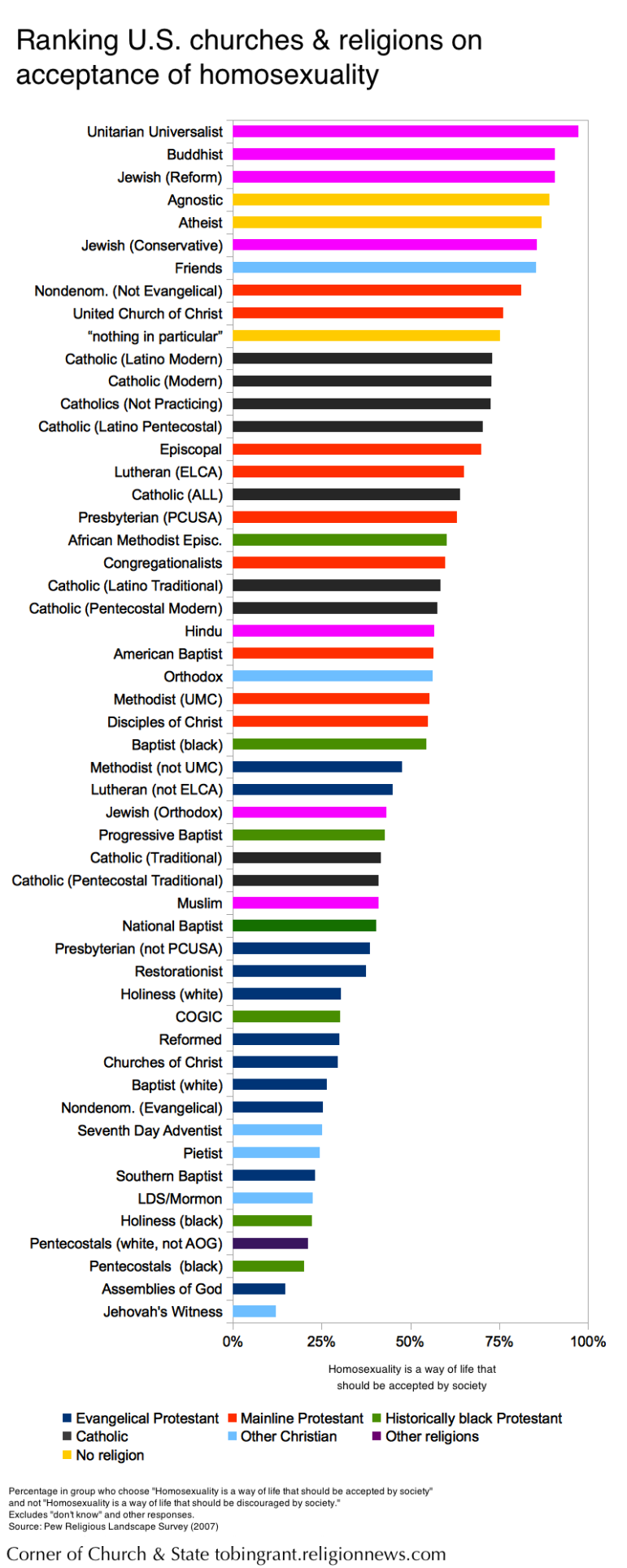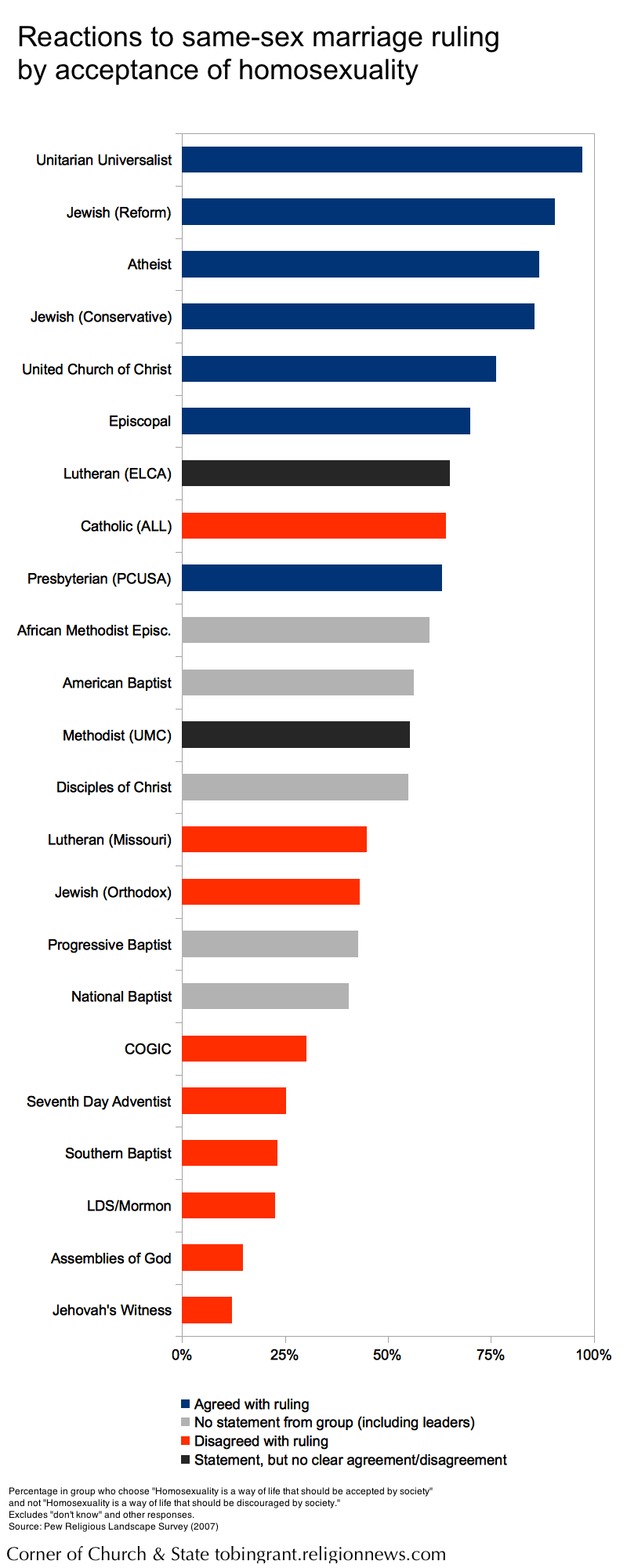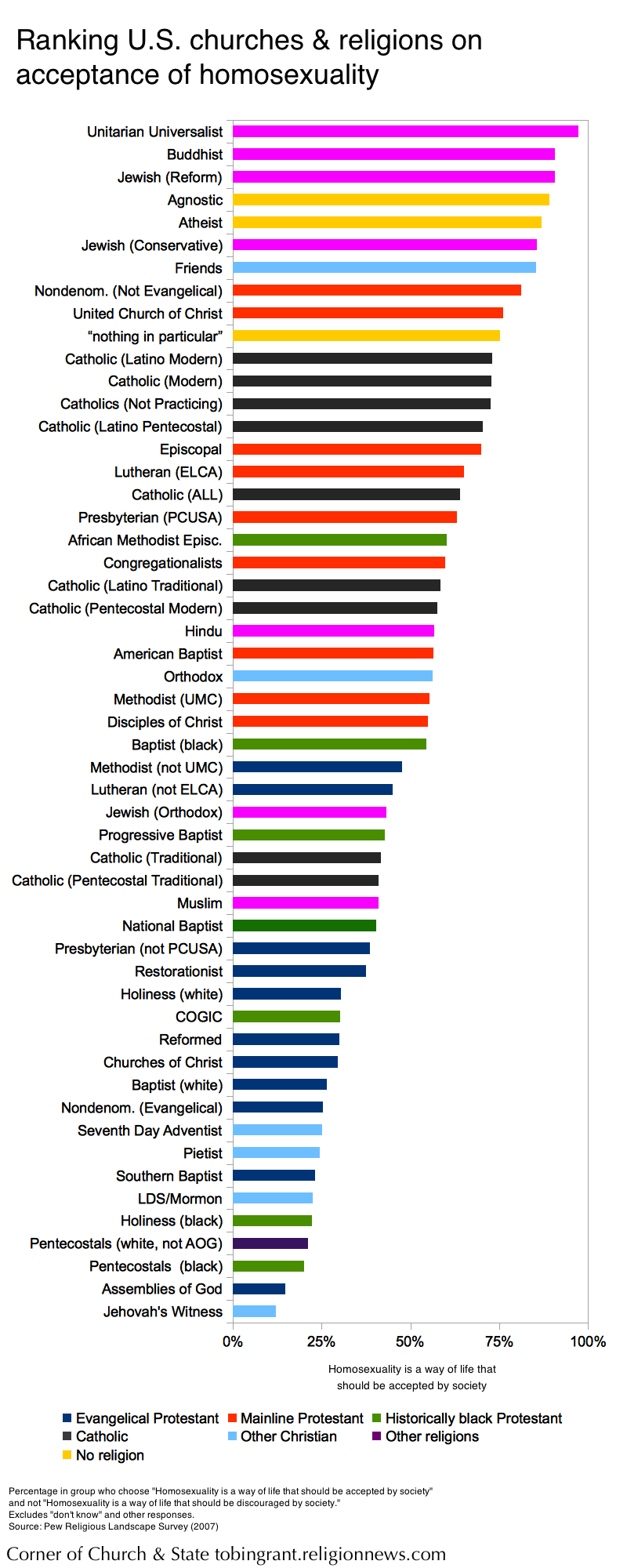Religious groups have shown a wide range of reactions to U.S. Supreme Court’s ruling that gay and lesbian couples have a right to marry. There are some who have applauded the decision. Others have vehemently disagreed with the ruling as an audacious attempt to redefine marriage.
There have also been some religious communities that have remained mum. One reason: differences in opinion among their members.
Sociologists and political scientists who research clergy have repeatedly found that religious leaders are most likely to make public pronouncements on politics when their religious communities are unified. We see something similar on the question of same-sex marriage.
This first graph shows how some of the larger U.S. religious groups have responded to the Supreme Court decision. Each group has positions on marriage and sexuality; most have additional statements on LGBT rights. Most groups made a statement immediately after last week’s ruling, but some did not.
If you know of a public statement that I missed, let me know via twitter: @tobingrant
The graph shows the response to the ruling and also the general acceptance of homosexuality among members in each church, denomination, or religion. Each bar is the percentage of each group that believe that homosexuality should be accepted by society. The data may under-state acceptance of homosexuality (because the data is from 2007), but 1) comparisons of groups to recent on same-sex marriage suggest that the change is small, and 2) the relative differences between religious groups remains the same.
The graph shows that public agreement with the Supreme Court was common among groups that have large majorities of members who believe that homosexuality should be accepted. Unitarians, atheists (I used American Atheists as the group), reform & conservative Jews, and United Church of Christ applauded the ruling.
Public pronouncements become less common for groups in which a majority is accepting of homosexuality, but there remains a large minority that is not. These groups have clear statements on how they understand marriage, sexuality, ecclesiology, but they were silent on the Supreme Court ruling. Most of these churches approach LGBT issues in ways that do not neatly fall into the categories of affirming or exclusion. United Methodists allow LGBT Christians to be members but “self-avowed practicing homosexuals” cannot be clergy, and same-sex marriage cannot be performed. Other groups, such as Lutherans (ELCA) and Disciples of Christ, the question of same-sex marriage is left to individual congregations to decide.
Catholics are unique on this issue. The bishops uphold the position of the church. There is more of a disconnect between American Catholics and the church on this issue. As I show in the next graph, Catholics who see a conflict between tradition and modern society are far less accepting of homosexuality (see graph below).
Churches are likely to publicly disagree with the court decision if their members are less accepting of homosexuality. Southern Baptists, Latter-Day Saints, Missouri Synod Lutherans, and others quickly responded to the court’s decision, making their disagreement clear. There were many other evangelical churches that also made statements, but they couldn’t be shown because they are too small to have enough members in the survey.
Historically black denominations were the exception. Only COGIC made a statement on the ruling. Among National Baptists, for example, the association leaves decisions to individual congregations but has taken a public position on marriage, both as a theological matter and a practical one (e.g., the position of military chaplains).
This second admittedly-rainbow-colored graph ranks over 40 religious groups on their members’ views of homosexuality. It includes groups that could not be included on the first graph because they are collections of churches without one clear organizational voice. I also include 1) the position of all Catholics and 2) a breakdown of eight different types of Catholics (see explanation here). The graph is colored to show the broader religious tradition of the group. The graph shows,
- Nearly all Unitarians, Buddhists, Jews (with the exception of the orthodox), and the so-called “nones” are accepting of homosexuality.
- Evangelicals and most the historically black denominations are the least accepting of homosexuality. Also in the “discourage, don’t accept” camp are Jehovah’s Witnesses, Latter-Day Saints, Pietists (e.g., Mennonites), and Seventh Day Adventists (which some consider evangelical).
- Mainline denominations range from being divided over sexuality (e.g., United Methodists) to be affirming (e.g., United Church of Christ).
- In general, U.S. Catholics say that homosexuality should be accepted by society. This is true for many of the types of Catholics included in the graph. Traditional Catholics, however, are the exception.
Updates: The first graph no longer includes Churches of Christ because they do not have a single leader/organization that speaks for all of the churches. ELCA and UMC leaders released statements that discussed the ruling and continuing debate in respective denominations. This is now indicated on the first graph.
Don’t miss any more posts from the Corner of Church & State. Click the red subscribe button in the right hand column. Follow @TobinGrant on Twitter and on the Corner of Church & State Facebook page.







